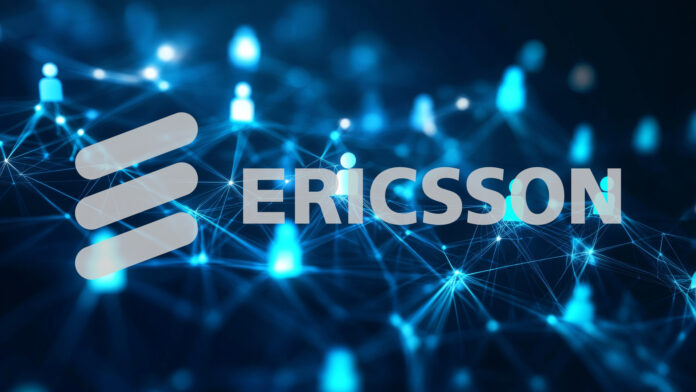In sum – what to know:
Open 5G investment – Ericsson is investing €200m in Athlone, Ireland, to develop open, programmable 5G tech that supports dynamic multi-vendor networks.
Automation-first platform – funding will go on its automation latform and RAN apps to optimize performance, tuning, and AI/ML intelligence.
Clientless secure access – as well, a new ZTNA feature in its NetCloud platform secures remote and unmanaged device access via isolated cloud links.
Ericsson is investing €200 million over three years into its R&D centre in Athlone, County Meath, in central Ireland. The funding will support the development of technology to manage 5G networks – particularly those that are presented as ‘open’ and ‘programmable’, designed to work across multiple vendors and to allow mobile operators more dynamic control and customisation of their 5G features and systems.
The investment reflects a broader industry shift toward smarter, AI-driven, vendor-neutral network management, as fully-fledged 5G (in standalone mode) rolls out globally and discussions around 6G gain traction in 3GPP circles. It follows the drive for programmable, software-defined infrastructure that can adapt on the fly, cut costs, bring differentiation, and better serve the evolving demands of AI-powered systems and services.
Software-based network programmability lets operators tweak performance in real time – to boost bandwidth, slash latency, or tighten security, as required. It also makes differentiated slices and features available to developers and enterprises via application programming interfaces (APIs), which can be tuned for specific smart-industry services. With AI/ML, the system can adapt on its own to optimize traffic, fix faults, and respond to threats.
Ericsson has operated in Ireland for 50 years. Its site in Athlone (Ericsson Athlone) is a key R&D hub for the firm. The project, and the site itself, is backed by the Irish government via IDA Ireland, in charge of inward investment into the country. The new money will go to develop its so-called Intelligent Automation Platform (EIAP) and modular rApps applications – conceived in Athlone and geared to optimize radio access network (RAN) infrastructure.
Ericsson employs 1,300 people in Ireland. Peter Burke, Ireland’s minister for enterprise, trade and employment, said: “Ericsson’s [investment…] will improve efficiency in 5G networks globally.” Denis Dullea, head of the Athlone facility and network engineering unit at Ericsson, said: “We’re both investing in Ireland’s future and empowering mobile operators worldwide.”
Meanwhile, Ericsson has added a ‘clientless’ zero-trust access (ZTNA) feature to its NetCloud SASE (Secure Access Service Edge) platform, which integrates security tools (web gateways, cloud access brokers, firewall services) with wide-area network (WAN) functions in a single cloud service, easier to scale and adapt. Clientless ZTNA lets users securely access company devices and systems without additional VPNs, browser plug-ins, or other security software.
Access is granted via a secure link, isolated in the cloud – so even if the device is risky (like a contractor’s laptop or someone’s personal phone), malware does not spread to corporate systems. It is pitched to companies working with third parties and bring-your-own-device (BYOD) schemes, cutting complexity by avoiding client software and VPN headaches. It enforces strict least-privilege access controls, real-time risk monitoring, and network segmentation.
It also strengthens security for IoT and OT assets by isolating interactions with corporate systems in cloud containers, protecting against malware. The platform enables secure access via a URL, enforces granular access policies based on user roles and device types, and uses real-time threat monitoring to instantly revoke access where activity is suspicious. It supports secure network segmentation, protecting against lateral movement.
A statement said: “This is the first integrated, clientless ZTNA solution… built for enterprise 5G wireless networks… Unlike other clientless solutions relying solely on access controls, [it] activates application sessions in isolated cloud containers… This air-gaps corporate systems from potentially insecure devices, preventing malware spread into the enterprise.” It integrates with corporate identity and access management (IAM) systems.
Pankaj Malhotra, head of WAN and security in Ericsson’s enterprise wireless solutions business, said: “5G uniquely introduces a surge of IoT and OT assets, which are frequently monitored and maintained by third-party suppliers and contractors. Unlike legacy VPNs that provide broad network access and are difficult to implement, NetCloud ZTNA offers a straightforward, policy-based solution that ensures users have isolated access to resources based on the principle of least privilege.”
In a supplied quote, John Grady, principal analyst at Enterprise Strategy Group, now part of Omdia said: “VPNs fail to address modern secure access needs due to their complexity, management overhead, security vulnerabilities, and performance issues, making ZTNA a must. But ZTNA solutions that rely on agents make it difficult for overburdened IT teams to deploy to third parties needing access to corporate resources. For organizations adopting a wireless-centric strategy, [this] offers a unique, isolation-based approach which grants access to specified assets, while providing effective protection against malicious activity and the threat of malware.”

